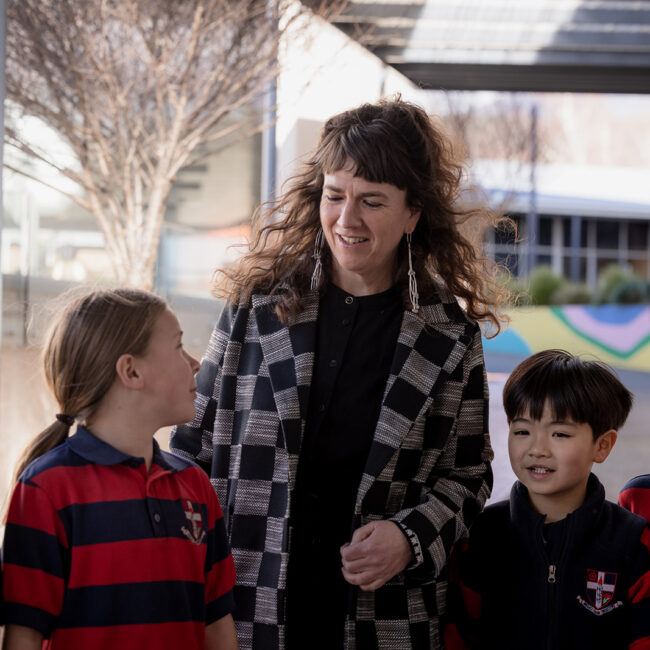History of the School
The Friends’ School in Hobart was first proposed in 1884 when a conference of parents requested assistance from English Friends to commence a school in Tasmania.
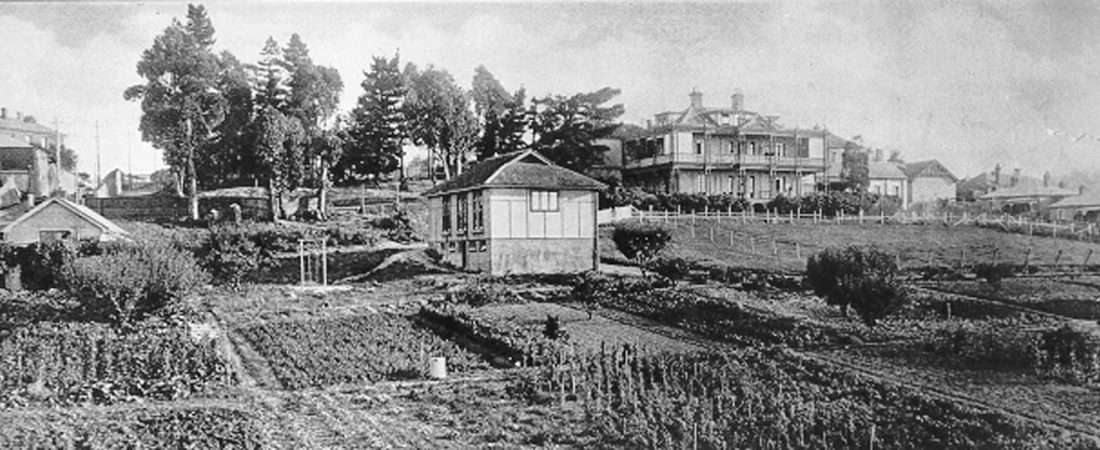
Clemes brought books, slides and other equipment contributed by English Friends with him and The Friends’ School opened at 60-62 Warwick Street on 31 January 1887. He was a remarkable reformer in education, not least because he believed in co-education.
The initial enrolment of 33 expanded rapidly and it soon became evident that the School would need larger premises. The School Committee considered the estate of Hobartville on the northern boundary of the city and assisted by non-Quakers in Hobart and Quakers in all parts of Australia and England, the Hobart Committee purchased Hobartville.
Clemes was an educator ahead of his times. He set about with “great assiduity and thoroughness” to make Friends’ a School where education was concerned with every child, not just the few gifted.
Clemes saw education as a preparation for life. He aimed for the school to be conducted in the spirit of a family with high academic endeavour taking its place with the development of practical skills and leisure time interests. He did not encourage competition, preferring “the pursuit of learning for its own sake”.
In 1900 Samuel and Margaret Clemes left Friends’ and established their own school close by. It was initially called Leslie House School and later Clemes College, and in 1945 that school amalgamated with The Friends’ School.
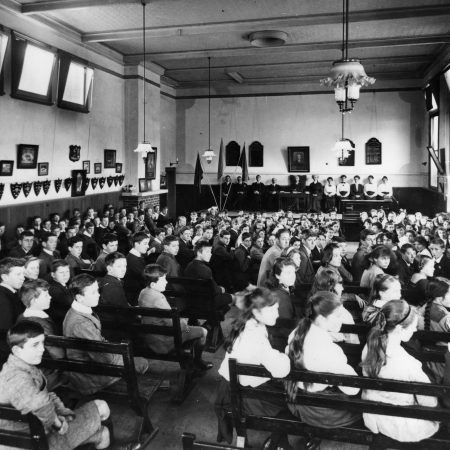
That year, Ernest Unwin arrived in Hobart with his wife Ursula and their son and daughter to take up the School’s Headmastership.
Unwin was anxious to broaden the subjects available to scholars especially in areas such as Art and Science. He initiated a huge building program and the School’s resources were enhanced. In this period the distinctive appearance of the School changed with the addition of the front portico, the Hodgkin Hall, the original science and art block and the boys’ boarding wing.
School colours of scarlet, grey and navy were introduced as was the motto, Nemo sibi nascitur – No person is born for self alone. He remained Principal until 1944.
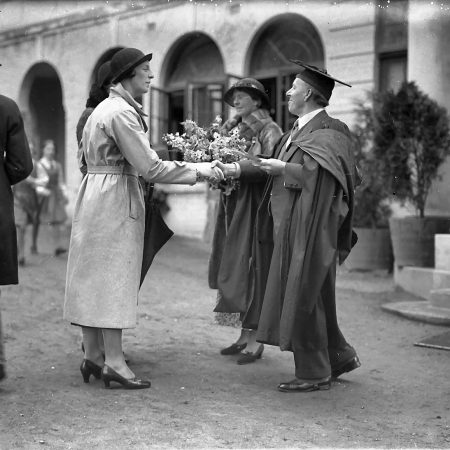
This meant an enrolment of an extra 220 scholars and a shortage of teaching space. The curriculum was widened and general studies classes initiated to complement strongly academic studies. Expansion included the opening of the Preparatory School on Argyle Street in 1955 followed by the Sports Ground at Bell Street in 1958. Building on the Commercial Road site began in 1962 with the opening of the Unwin Memorial Science and the Art block.
Roderic Grosvenor was appointed Principal in 1973 followed by Margaret and Michael Bailey, who became the first Joint Principals in 1980. During these years the School’s Pastoral Care program was widened as were the experiences offered to students. New subjects offered included Outdoor Education, Peace Studies and Japanese. Clemes, the senior secondary section of the School, was established and the School began its Sister School relationships.
Stephanie and Lyndsay Farrall were appointed Friends’ School Co-Principals in 1989. During the Farrall years the School’s enrolment grew to over 1000 students and weekly Gatherings were reintroduced. A building and refurbishment program was undertaken and new facilities including a Before and After School Care Centre, a Health and Fitness Centre and Robey and Walker House residential accommodations were established. Curricular developments included the introduction of Chinese classes, International Baccalaureate studies from K-12 and Vocational Studies in Year 11 and 12.
John Green took up the position of Principal of The Friends’ School in mid-2002. Enrolments continued to climb, the curriculum broadened and attention was paid to cross-disciplinary studies. An Early Learning Centre was opened and Far South was purchased. Library building progressed and The Farrall Centre was built.
Friends’ has retained its core as a Quaker School now for over 130 years. Families from all religious and spiritual traditions are attracted to Quaker schools throughout the world and this is also in evidence at The Friends’ School.
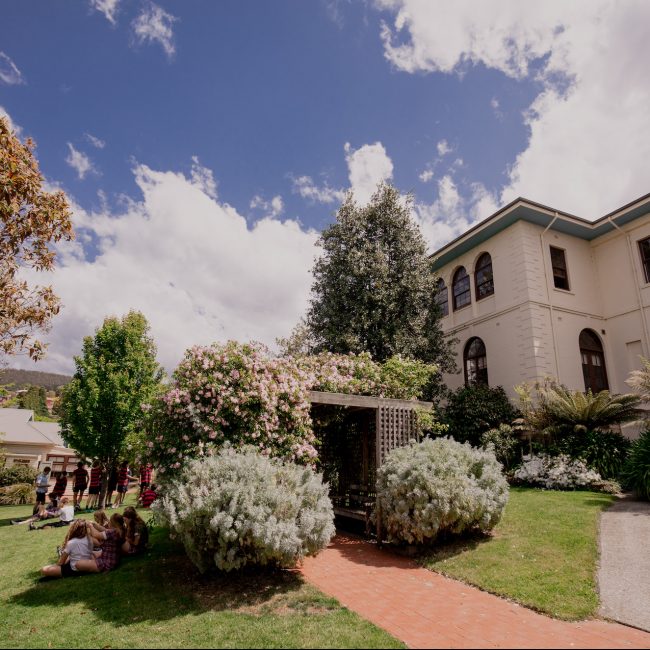
Nelson File was born and raised a Friend in Philadelphia, Pennsylvania, USA and graduated from Abington Friends School, a Quaker School. Nelson taught for several years at Friends’ Central School in Philadelphia before working outside the United States professionally for 21 years prior to his appointment at Friends’. Nelson joined The Friends’ School at the start of the 2013 academic year his wife Lisa and, initially, by two of their three children. His children have since graduated from the School. Nelson retired from being an education leader and Principal at The Friends’ School in December 2023.
We welcomed Esther Hill as the new Principal of The Friends’ School at the start of 2024.
Esther is a progressive educator and leader with extensive experience in the co-educational, Pre-Kindergarten to Year 12 landscape. Esther’s ability to connect with others and her strong and personal alignment with the School’s Quaker ethos and values ensure that she will lead the School with passion, heart and courage.
“Leadership is about service. To lead is to serve a community. To understand the history that has come before. It is about deep listening and being present,” said Esther. “Being an educator is the best job in the world. It is a privilege to be able to support our young people to grow and develop and to find ways of flourishing and to serve in this role alongside our staff who are dedicated to that purpose.”
